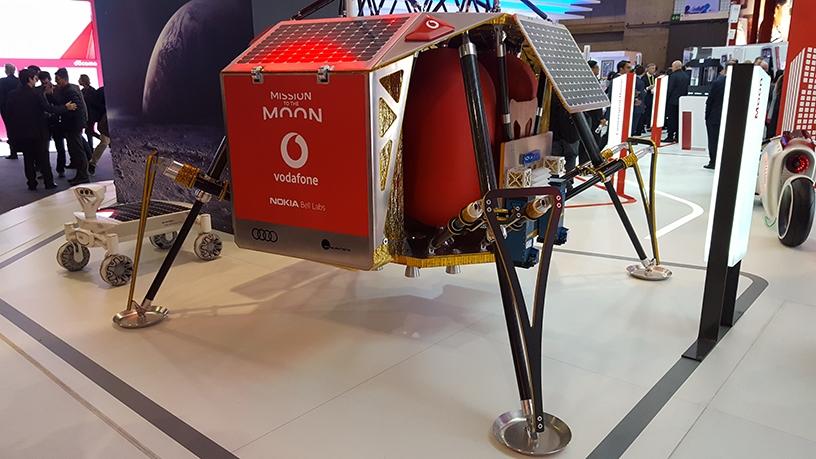
It may sound like science fiction but the Moon will get 4G coverage next year.
Exactly 50 years after the first NASA astronauts walked on the Moon's surface, telco giant Vodafone plans to create the first 4G LTE network off-planet to support a mission by PTScientists in 2019.
Vodafone CEO Vittorio Colao first gave a teaser to the announcement in his keynote address at Mobile World Congress (MWC) 2018 in Barcelona.
"We are just about to build the first 4G network outside of planet Earth. It will be a 4G network on the Moon and of course there is a lot of innovation there in the way you transmit back to Earth," he said.
Berlin-based company PTScientists is working with Vodafone Germany and Audi to achieve the first privately-funded Moon landing. At MWC, it was also announced that Nokia had been appointed as the technology partner for the "Mission to the Moon".
The mission is due to launch in late 2019 from Cape Canaveral on a SpaceX Falcon 9 rocket. The German new-space company aims to bring down the cost of space exploration and democratise access to the Moon.
Robert B"ohme, CEO and founder of PTScientists, said the mission is a crucial first step for sustainable exploration of the solar system.
"In order for humanity to leave the cradle of Earth, we need to develop infrastructures beyond our home planet. With Mission to the Moon, we will establish and test the first elements of a dedicated communications network on the Moon. The great thing about this LTE solution is that it saves so much power, and the less energy we use sending data, the more we have to do science."
Vodafone's network expertise will be used to set up the Moon's first 4G network, connecting two Audi lunar quattro rovers to a base station in the Autonomous Landing and Navigation Module.
Nokia, through Nokia Bell Labs, will create a space-grade Ultra Compact Network that will be the lightest developed to date, weighing less than one kilogram.
The 4G network will enable the lunar quattro rovers to communicate and transfer scientific data and HD video while they carefully approach and study NASA's Apollo 17 lunar roving vehicle that was used by the last astronauts to walk on the Moon (commander Eugene Cernan and Harrison Schmitt) to explore the Taurus-Littrow valley in December 1972.
Vodafone testing indicates the base station should be able to broadcast 4G using the 1 800MHz frequency band and send back the first live HD video feed of the Moon's surface, which will be broadcast to a global audience via a deep space link that interconnects with the PTScientists server in the Mission Control Centre in Berlin.
A 4G network is highly energy-efficient compared to analogue radio and that will be crucial to Mission to the Moon and is the first step to building communications infrastructure for future missions.
"This important mission is supporting, among other things, the development of new space-grade technologies for future data networking, processing and storage, and will help advance the communications infrastructure required for academics, industry and educational institutions in conducting lunar research," said Nokia CTO and Bell Labs president Marcus Weldon. "These aims have potentially wide-ranging implications for many stakeholders and humanity as a whole."
"This project involves a radically innovative approach to the development of mobile network infrastructure. It is also a great example of an independent, multi-skilled team achieving an objective of immense significance through their courage, pioneering spirit and inventiveness," said Vodafone Germany CEO Hannes Ametsreiter.
Share